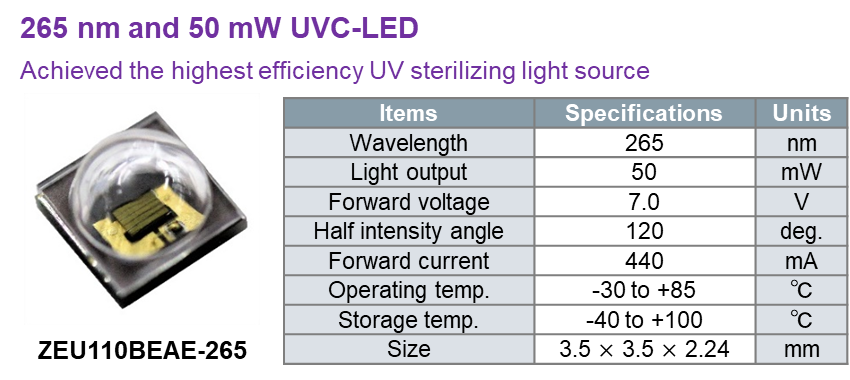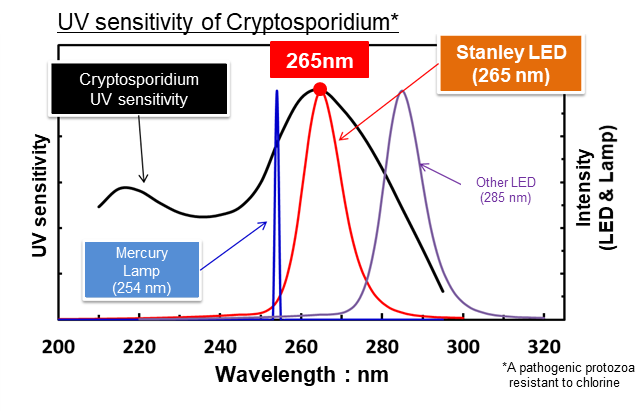Stanley Electric is a Japanese automotive LED and UV/IR LED company, whose high-power Deep UV LEDs have attracted a great deal of attention, especially in the field of public health and disinfection. The exclusive AlN-based UV-C LED allows Stanley to engage in extremely high-power UV LED technologies and applications. With a production range from semiconductor substrate, chips, UV LED packages, UV LED lighting source modules and UV LED water disinfection reactors, Stanley Electric is dedicated to providing full-services for water disinfection and sterilization markets.
LEDinside was very honored to have a phone call interview with Yuko Mukade from Stanley Electric, to learn their prospective towards UV-C LED technology and market trend in 2020.
Mukade noted that Stanley carries AlN-based UV LED, which has a linear power performance and allows high driving current and achieves high output power. Stanley 265nm UV-C LED has already achieved 50mW. By acquiring HexaTech, Stanley will be able to achieve 200 mW and lead a superior position in the sterilization market in the near future.

(Source: Stanley)
Compared with 275-280nm UV-C LED, 265nm UV-C LED has better inactivation effects in killing different bacteria and viruses. In addition, with specified product optical power (irradiance) and irradiation time, 265nm UV-C wavelength is the stronger the inactivation efficiency.

(Source: Stanley)
Mukade said that Stanley has already received inquiries for water disinfection and sterilization applications. By providing high power UV LED and water disinfection module, Stanley also targets applications in infrastructure and the medical markets across the world. Until now, for water disinfection, Stanley has already developed 2L/min, 10L/min, and 100L/min reactors with an inactivating rate of over 99.99% (4 Log). In addition, Stanley has introduced UV-C LED to automotive tier-one original equipment manufacturers in Japan, Asia-Pacific and Europe.
Author Joanne Wu / Research Manager, LEDinside





 CN
TW
EN
CN
TW
EN







